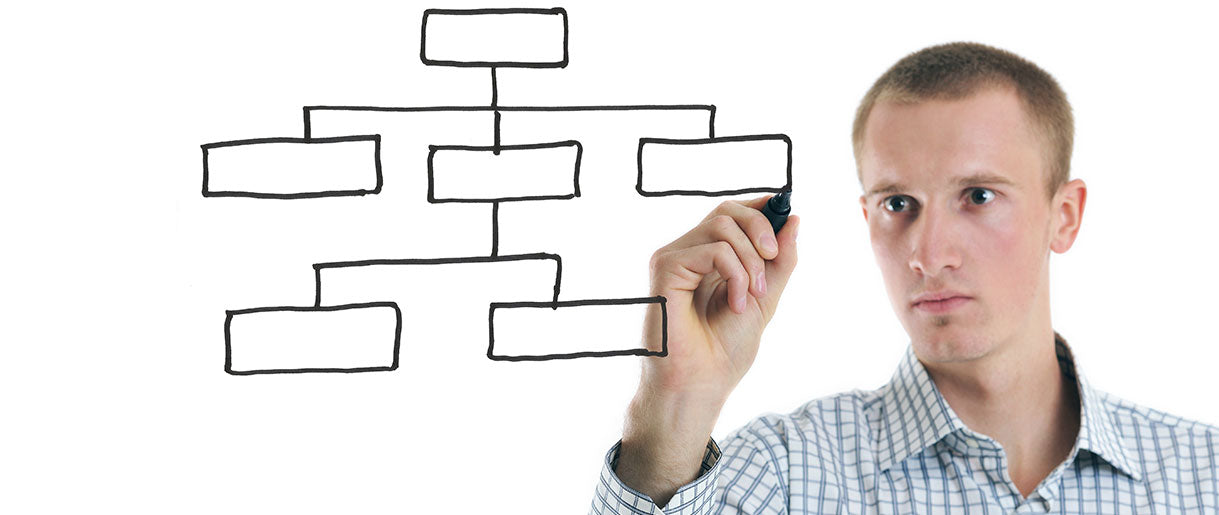Time management isn't just about keeping busy; it's about being smart with your time. Techniques like the Pomodoro Technique, Eisenhower Matrix,and Time Blocking can revolutionize how you organize your day.
Moreover, by adopting strategies such as prioritizing tasks with the Urgent-Important Principle,minimizing distractions with the Two-Minute Rule,and planning with the 4 D's (Do, Defer, Delegate, Delete), you can transform your productivity and free up time for what truly matters.
This article explores these techniques, providing practical tools to tackle your to-do list, enhance focus, and reduce stress. Whether you're overwhelmed by a hectic schedule or just looking to optimize your daily routine, these time management strategies are here to help.
1. Pomodoro Technique
The Pomodoro Technique is like a secret weapon for tackling procrastination and maintaining high productivity levels. Here's how it works and why it's so effective:
- Structured Focus: You work for 25 minutes straight (one Pomodoro), then take a 5-minute break. This short burst keeps your mind fresh and focused.
- Prevents Burnout:Regular breaks ensure you don't get burned out. It's like allowing your brain to breathe and recharge before diving back in.
Imagine it as a series of short, intense sprints instead of a never-ending marathon. You're racing against the clock, but only for a brief period. This creates a sense of urgency and makes the task less daunting.
To implement this technique, all you need is a timer. Start by tackling a task for 25 minutes, then relax for 5 minutes. Repeat this cycle four times, and after the fourth Pomodoro, take a longer break, say 15-30 minutes.
2. Eisenhower Matrix

The Eisenhower Matrix is a time management superhero, helping you sort tasks like a pro. Here's what makes it so effective:
- Urgent vs. Important: This matrix divides tasks into four categories: Urgent and Important, Important but Not Urgent, Urgent but Not Important, and Neither Urgent nor Important.
- Strategic Delegation and Delay: It guides you to do tasks that are urgent and important first, plan for important but not urgent tasks, delegate the urgent but not important, and drop what's neither.
Picture yourself as the commander-in-chief of your to-do list or morning routine checklist. You're not just doing things randomly; you're making strategic decisions on what needs your attention now, later, or not at all.
To use this method, draw a square and divide it into four quadrants. Label them as mentioned and place your tasks in each category. This visual layout helps you quickly see where you should focus your energies.
3. Time Blocking
Time Blocking is like putting together a puzzle where each piece is a chunk of your day dedicated to a specific task. It's a super effective way to manage your time. Here's how it can work wonders:
- Structured Day: Assign specific blocks of time to different activities or tasks. It could be work projects, personal time, morning energy exercises, or anything part of your routine for success.
- Minimizes Multitasking: Focusing on one thing at a time reduces the inefficiency of constantly switching between tasks. It's about giving each task its own time to shine.
Imagine your day as a neatly organized bento box, where each compartment holds a different part of your meal—or, in this case, your activities. This compartmentalization keeps everything neat and manageable.
To start time blocking, grab your calendar and begin assigning tasks to specific hours. Be realistic about how much time each task will take and include buffer time for breaks.
4. The 80/20 Rule (Pareto Principle)

The 80/20 Rule, also known as the Pareto Principle, is a time management tactic that can seriously streamline productivity—it's a productivity hack you should leverage. Here's the lowdown:
- Maximizing Impact: This rule suggests that 80% of results come from just 20% of your efforts. Identifying and focusing on these critical tasks can significantly increase your efficiency.
- Intelligent Prioritization: It's about distinguishing the tasks that offer the most significant outcomes and dedicating your best efforts to them.
Imagine you're a gold miner. Instead of spending all day sifting through tons of dirt, you focus on the spots where you're most likely to strike gold. That's the essence of the 80/20 Rule.
To apply this principle, closely examine your tasks and identify which ones yield the highest results or satisfaction. Focus your energy and resources on these tasks.
5. Two-Minute Rule
The Two-Minute Rule is a simple yet incredibly effective time management technique that can quickly clear your plate of minor tasks. Here's how it can help you:
- Immediate Action for Small Tasks: If something takes less than two minutes, do it immediately. This could be replying to an email, making a quick phone call, or organizing your desk.
- Reducing Clutter: By handling these small tasks immediately, you prevent them from piling up and becoming a larger, more daunting list.
Imagine your workday as a kitchen during a cooking session. The Two-Minute Rule is like cleaning as you go. Instead of ending up with a mountain of dishes and utensils to wash, you keep things tidy along the way.
To incorporate this rule, whenever you come across a quick completion task, do it then and there. It's surprising how much time you can save in the long run by dealing with these little things promptly.
6. Set SMART Goals

Setting SMART Goals is like building a bridge between your dreams and reality. It's a framework that ensures your goals are well-defined and achievable. Here's what makes SMART goals so effective:
- Specific: Clearly define what you want to achieve. The more specific your goal, the better your focus.
- Measurable: Have criteria for measuring progress. It tells you how far you've come and how far you still need to go.
- Achievable: Set realistic and attainable goals. It's about finding the sweet spot between challenging and possible.
- Relevant: Ensure your goals are relevant to your larger objectives and values. They should align with your long-term plans.
- Time-bound: Set a deadline. It creates a sense of urgency and helps prevent everyday tasks from taking priority over your longer-term goals.
Think of setting a goal as plotting a course on a map. SMART goals give you a clear route and checkpoints, making the journey more navigable and less overwhelming.
To apply this technique, break down your big goals into smaller, SMART goals. For example, instead of saying, "I want to get fit," try, "I will work out for 30 minutes three times a week for the next month." It's about making your goals clear, trackable, and attainable.
7. Batch Processing
Batch processing is like doing your laundry—instead of washing one item at a time, you do a full load to save time and energy. Here's why it's a time management superstar:
- Group Similar Tasks: By grouping and tackling similar tasks in one go, you minimize the start-stop-start process, which can be a significant time waster.
- Increased Focus and Productivity: Focusing on one type of task at a time can significantly increase your efficiency and quality of work.
Imagine your day as a series of grouped activities. Instead of jumping from an email to a meeting to a report, you group all your emails, then move on to meetings, and so on. It's about creating blocks of similar activities.
To implement batch processing, categorize your tasks (like responding to emails, making phone calls, creating content). Then, dedicate specific times to each category.
This method streamlines your workflow and can massively boost your productivity. Consider making grouping tasks part of your morning routine for energy—it can help you save energy throughout the day.
8. The 4 D's (Do, Defer, Delegate, Delete)

The 4 D's—Do, Defer, Delegate, Delete—are like a filter for your tasks, helping you quickly decide what deserves your attention and what doesn't. Here's how each 'D' plays a crucial role:
- Do: If a task is important and you're the best person to handle it, do it as soon as possible.
- Defer: If it's important but not urgent, schedule it for later. This helps in prioritizing tasks that need immediate attention.
- Delegate: If the task is urgent, but someone else can do it just as well (or better), delegate it. This frees up your time for tasks that require your unique skills.
- Delete: If a task is neither important nor urgent, consider eliminating it. This declutters your to-do list and mind.
Imagine standing in front of a conveyor belt of tasks. Using the 4 D's is like sorting them efficiently—keeping what you need and discarding what you don't.
To use this technique, review your tasks and ask which 'D' each falls into. It's a powerful way to manage your time and focus on what truly matters.
9. The Kanban Method
The Kanban Method is like having a GPS for your tasks—it helps you visualize where everything stands. Originally from lean manufacturing, it's now a favorite in time management. Here's how it works:
- Visual Boards: Create a board with columns for different stages of tasks, such as 'To Do,' 'In Progress,' and 'Done.' It's a clear, visual way to track progress.
- Limit Work in Progress: By limiting how many tasks are in the 'In Progress' column, you can focus better and avoid being overwhelmed.
Imagine your work in front of you, where you can see exactly what needs to be done, what's being worked on, and what's already completed. It brings a sense of order and progress to your tasks.
You can use a physical board or a digital tool to implement Kanban. Start by categorizing your tasks and then move them along as you progress. It's a dynamic, visual way to manage your workload and ensure nothing falls through the cracks.
10. Mind Mapping

Mind mapping is a fantastic way to lay out your ideas and tasks. It's like drawing a map for your brain's journey through projects and goals. Here's how it becomes a game-changer in managing your time:
- Visual Thinking: Mind maps are all about visuals—think colorful branches, keywords, and images. This makes your planning session more engaging and helps you remember things better.
- Clear Structure:Starting with a central idea, you branch out into subtopics, tasks, and the nitty-gritty details. It's like having a tree where the trunk is your primary goal, and each branch is a specific task or idea related to it.
Think of it as creating a tree of possibilities. Each branch represents a different aspect of your project or goal. This way, you can see the 'big picture' without losing track of the smaller yet crucial details.
To kickstart your mind map, begin with a central idea (like a project or a goal) at the center. Then, let your thoughts branch out into related tasks and subtopics.
You can do this on a physical piece of paper, a whiteboard, or digital tools designed for mind mapping. It's not just a way to organize your thoughts; it's a creative method to plan and manage your tasks more efficiently.
FAQs About Time Management Techniques
How Can I Improve My Time Management Skills At Home?
Improving time management at home involves creating a balanced routine that distinguishes work hours from personal time. Start by establishing a dedicated workspace to minimize distractions.
Use tools like digital calendars, to-do lists, or time-tracking apps to schedule your daily tasks, including household chores, relaxation, and family time. Set specific goals, prioritize tasks based on urgency and importance, and avoid delegating responsibilities.
Most crucially, include time buffers to accommodate unforeseen interruptions and make time for self-care to maintain overall well-being.
How Does Time Management Contribute To Stress Reduction?
Effective time management is key to reducing stress, as it helps you maintain control over your schedule, avoid the pressure of last-minute rushes, and achieve a better work-life balance.
By prioritizing tasks, you tackle activities based on their importance, which prevents the accumulation of urgent tasks. Techniques like time-blocking can also ward off procrastination, ensuring you have dedicated periods for work, rest, and leisure.
Additionally, good time management affords you the mental space to engage in relaxation practices and hobbies, contributing to lower stress levels and improved mental health.
Can Time Management Techniques Differ For Individuals? If So, Why?
Time management techniques can and should differ for individuals because everyone has unique routines, responsibilities, challenges, and personal preferences. What works for one person might not work for another due to different working styles, levels of concentration, and personal commitments.
For instance, some may thrive on structured schedules and find techniques like time-blocking or the Pomodoro technique highly effective. In contrast, others might prefer a more flexible approach and opt for a simple to-do list or the Eisenhower Matrix to manage their tasks.
It's important to experiment with various techniques and adapt them to fit your specific needs and lifestyle, ensuring your approach to time management aligns with your personal and professional goals.
Key Takeaways
As we draw this insightful journey to a close, it's essential to reflect on the salient points that earmark effective time management not just as a repertoire of techniques but as a transformative lifestyle choice.
Every strategy we've explored, from the discipline of the Pomodoro Technique to the prioritizing prowess of the Eisenhower Box, serves a singular profound purpose: to orchestrate our days in a manner that harmonizes productivity with personal well-being.
Time management transcends far beyond ticking off tasks on a to-do list; it's about weaving those tasks into a fabric that supports your life's bigger picture, creating space for work and wellness. It carves out moments for that unhurried breakfast, provides peace of mind during recreational activities, and cultivates a buffer zone against the inherent stresses of our fast-paced lives.
Remember, wellness is a personal journey, an ongoing process that blossoms with our daily choices. It's not a distant destination set in the rigidity of schedules but a flexible, forgiving path that accommodates our unique rhythms, passions, and experiences.
And now, we turn the page over to you, our readers. Have these techniques paved the way for new wellness habits in your life? Perhaps they've even inspired creative, nutritious breakfasts to jumpstart your day or innovative ways to intertwine work with self-care. We invite you to share your narratives, tips, or even your favorite breakfast recipes in the comments below.









Let Us Know Your Comments